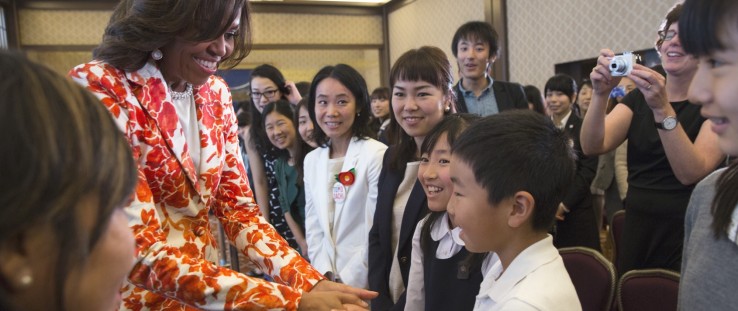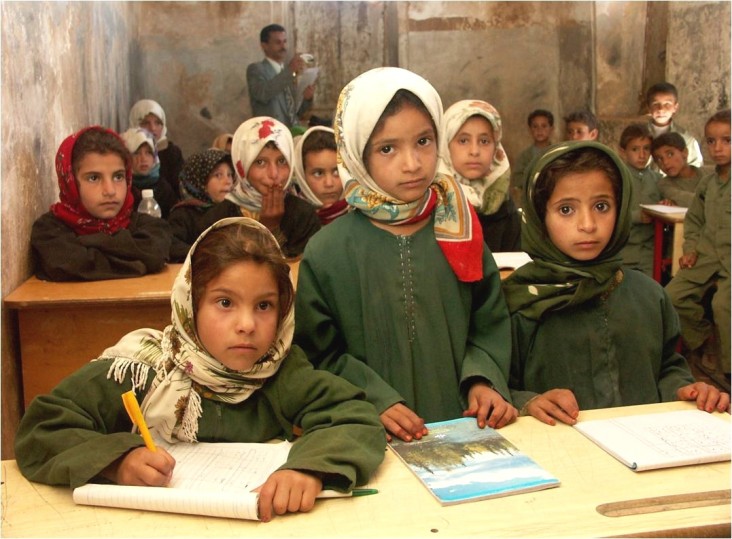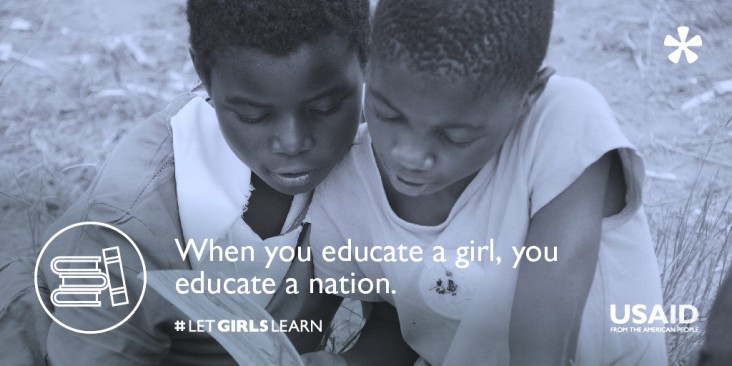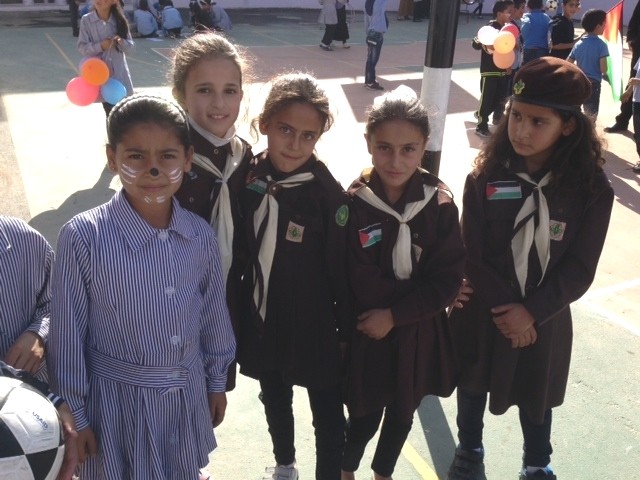 First lady Michelle Obama greets students following the Let Girls Learn announcement at the Iikura Guest House in Tokyo, Japan, March 19, 2015.
Official White House photo by Amanda Lucidon
First lady Michelle Obama greets students following the Let Girls Learn announcement at the Iikura Guest House in Tokyo, Japan, March 19, 2015.
Official White House photo by Amanda Lucidon
 First lady Michelle Obama greets students following the Let Girls Learn announcement at the Iikura Guest House in Tokyo, Japan, March 19, 2015.
Official White House photo by Amanda Lucidon
First lady Michelle Obama greets students following the Let Girls Learn announcement at the Iikura Guest House in Tokyo, Japan, March 19, 2015.
Official White House photo by Amanda Lucidon
Speeches Shim
In March 2015, President Barack Obama and first lady Michelle Obama launched the Let Girls Learn initiative, which brings together USAID, the Department of State, the Peace Corps, the Millennium Challenge Corporation (MCC) and others to address the range of challenges preventing adolescent girls from attending and completing school.
Around the world, girls face complex physical, cultural and financial barriers in accessing education. As a girl grows older, the fight to get an education becomes even harder.
FrontLines: Why should adolescent girls’ education matter to everyone?
First Lady Michelle Obama: Right now, 62 million girls worldwide—many of whom are adolescent girls—are not in school. They’re not getting any formal education at all—no reading, writing or math—none of the basic skills they need to provide for themselves and their families and contribute fully to their countries.
Sending these girls to school isn’t just the right thing to do, it’s also the smart thing to do—for them and their families, and for their economies and our economy too.
Studies from the World Bank show that one extra year of secondary school can increase a girls’ future income by 15 to 25 percent. And we know that when girls are educated, they are less likely to contract HIV, more likely to delay childbearing and vaccinate their children, and have lower maternal and infant mortality rates. Research even shows that sending more girls to school can boost an entire country’s GDP.
And when incomes and standards of living rise abroad, that’s good for companies here at home. So when girls are raising healthier families and contributing more to their country’s workforce, that’s just not good for their economy, it’s good for our economy too.
But ultimately, for me, this isn’t just an economic issue, it’s a moral issue. I know that I am where I am today because of my education. But if I had been born into different circumstances, who knows what opportunities I would have had. I feel so incredibly blessed to have had a chance to fulfill my potential, and I believe I have an obligation to help girls around the world fulfill theirs.
FrontLines: How is Let Girls Learn different from other girls’ education efforts out there?
Obama: International girls’ education is not a new issue. There are many organizations doing incredible work to help girls worldwide attend school, and Let Girls Learn is a U.S. Government-wide initiative that aims to support and complement these efforts by marshalling development expertise, diplomacy, community-driven efforts and support from individuals and the private sector.
For example, the Department of State is engaging with governments, partners and adolescent girls to ensure this issue is a priority; USAID is working in countries affected by armed conflict and crisis to provide safe access to schools, create alternative learning programs, and help rebuild education systems; and the Peace Corps is training their volunteers to work with their communities to develop girls’ education projects.
But it’s important to remember that investing in things like scholarships, school bathrooms and safe transportation to and from school will only go so far. It’s also about addressing more fundamental issues of how families, communities and societies value and treat women and girls.
If societies still view menstruation as shameful and shun menstruating girls, they’re forced to stay home from school when they have their periods. If societies don’t prosecute rapists and reject survivors of rape as “damaged goods,” the threat of assault while walking to or from school deters families from letting their daughters be educated. And, if societies provide few opportunities for women to join the workforce and support their families, it’s simply not financially viable for parents struggling with poverty to send their daughters to school. So as part of Let Girls Learn, we’re also emphasizing the need to address these broader societal issues.
FrontLines: On the one-year anniversary of this government-wide initiative, what have been some memorable moments for you since the launch?
Obama: During my trip to Cambodia, I had the pleasure of meeting with an amazing group of young women at a local school, and their stories just took my breath away. One of these girls told me that she wakes up at 4 o’clock every morning to cook for her family, water their crops and tend to their cows before riding her bike an hour to school. She’s determined to become a math teacher, and she stood up in front of me and the first lady of Cambodia and a bunch of reporters and said: “I have been through a lot of hardships. I know that I need to overcome them. I’ve never thought that they are the barrier to stop me. I’ve never thought of giving up … I never lose hope in myself.”
I also loved participating in the Girl Up Leadership Summit in Washington, D.C., and in Glamour magazine’s panel about the Power of an Educated Girl at the Apollo Theater in Harlem, N.Y., because I think it is so important to engage young people here at home in this issue.
I often tell young people here in the U.S. about the girls I meet around the world—how they’re walking for hours each day to school, learning at rickety desks in bare concrete classrooms, studying for hours each night, and holding tight to their hopes and ambitions, even in the face of overwhelming odds. I want girls—and boys—here in America to be inspired by these girls and to have that same kind of hunger for their education.
FrontLines: What can we expect to see from Let Girls Learn in 2016?
Obama: In this second year, we’ll be building on our progress by continuing work through agencies like USAID, the State Department, Peace Corps and MCC. We’ll also be working to engage more world leaders and create more joint efforts like our partnerships with Japan and the U.K. And we’ll be reaching out to even more companies in the private sector and working to engage more celebrities and other role models to raise awareness about this issue, particularly among young people here at home.
FrontLines: Conversely, as the administration enters its final year, any insight about the future for Let Girls Learn?
Obama: For me, this issue is personal. I really see myself in these girls, and I see my daughters in these girls, and I can’t just walk away from them once the administration is over. So I plan to keep raising my voice on their behalf for the rest of my life.
I plan to keep reaching out to local leaders, families and girls themselves worldwide to raise awareness about the power of sending girls to school. And I plan to keep talking about this issue here at home, because I believe that all of us have a fundamental moral obligation to give these girls a future worthy of their promise and their dreams.
- At least 100 million girls will drop out before ever completing primary school.
- Girls with secondary schooling are up to six times less likely to marry as kids than those with little or no education.
- Each extra year of a mother’s education reduces the probability of infant mortality by 5%-10%.
- 60% fewer girls under age 17 would become pregnant in sub-Saharan Africa and South and West Asia with a secondary education.
- Young women in Rwanda with secondary educations were five times more likely to know how HIV was transmitted than young women with no formal education.






Comment
Make a general inquiry or suggest an improvement.